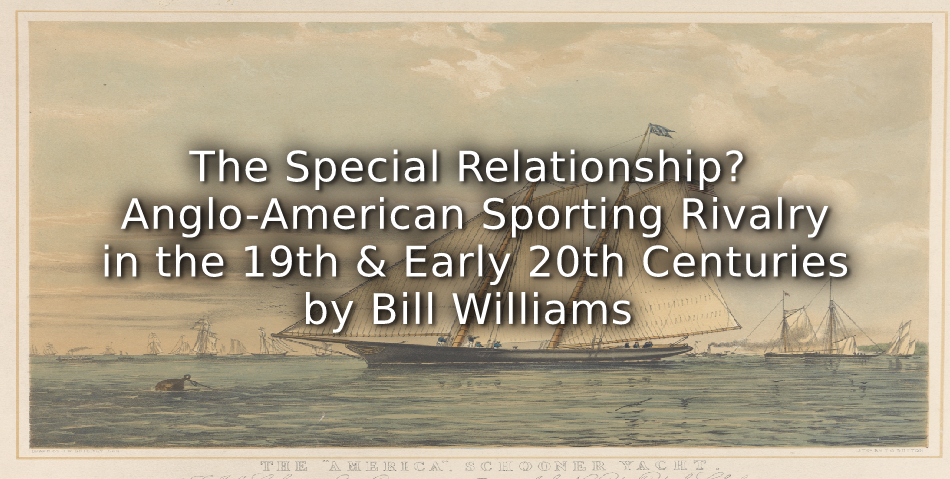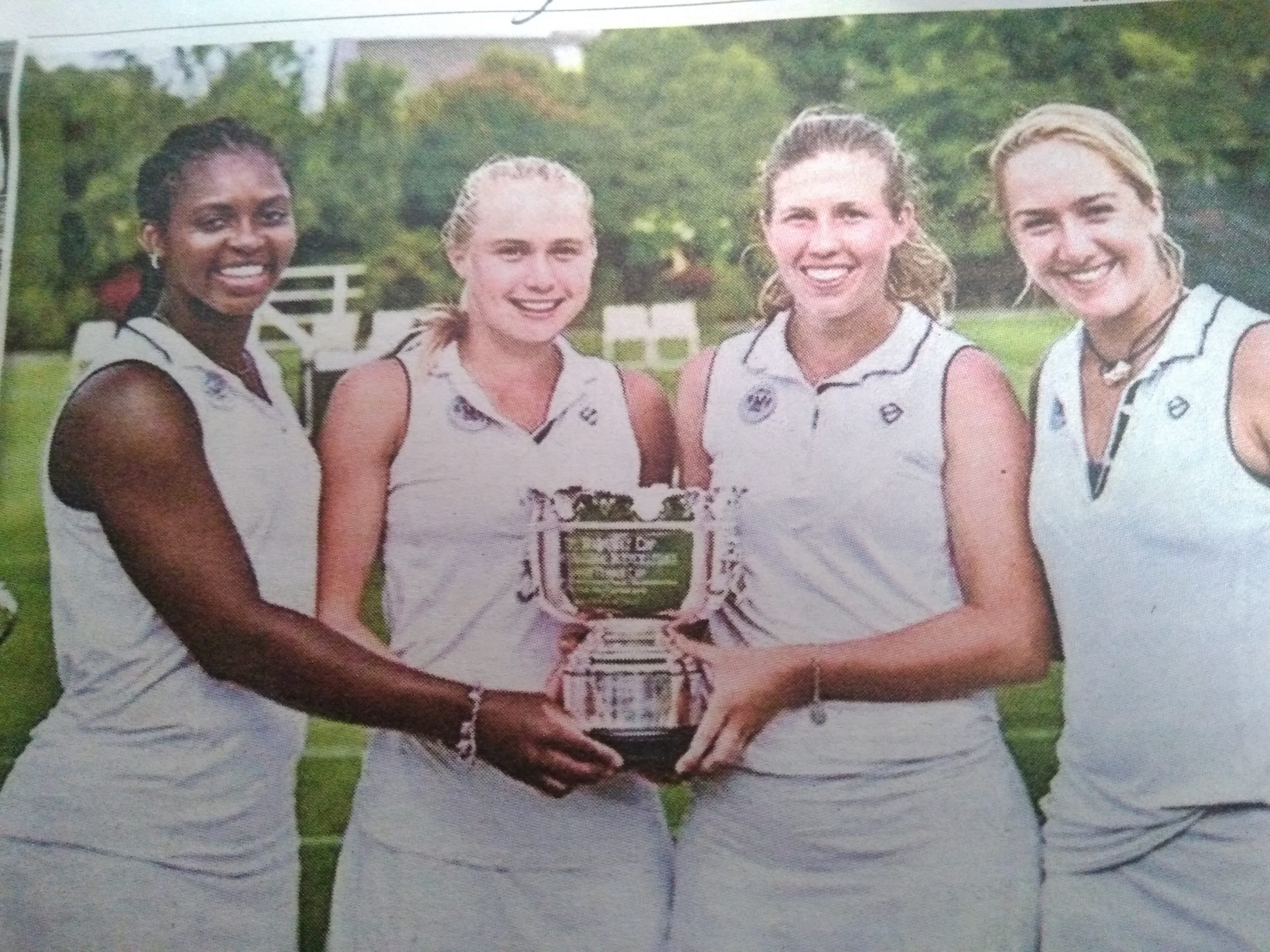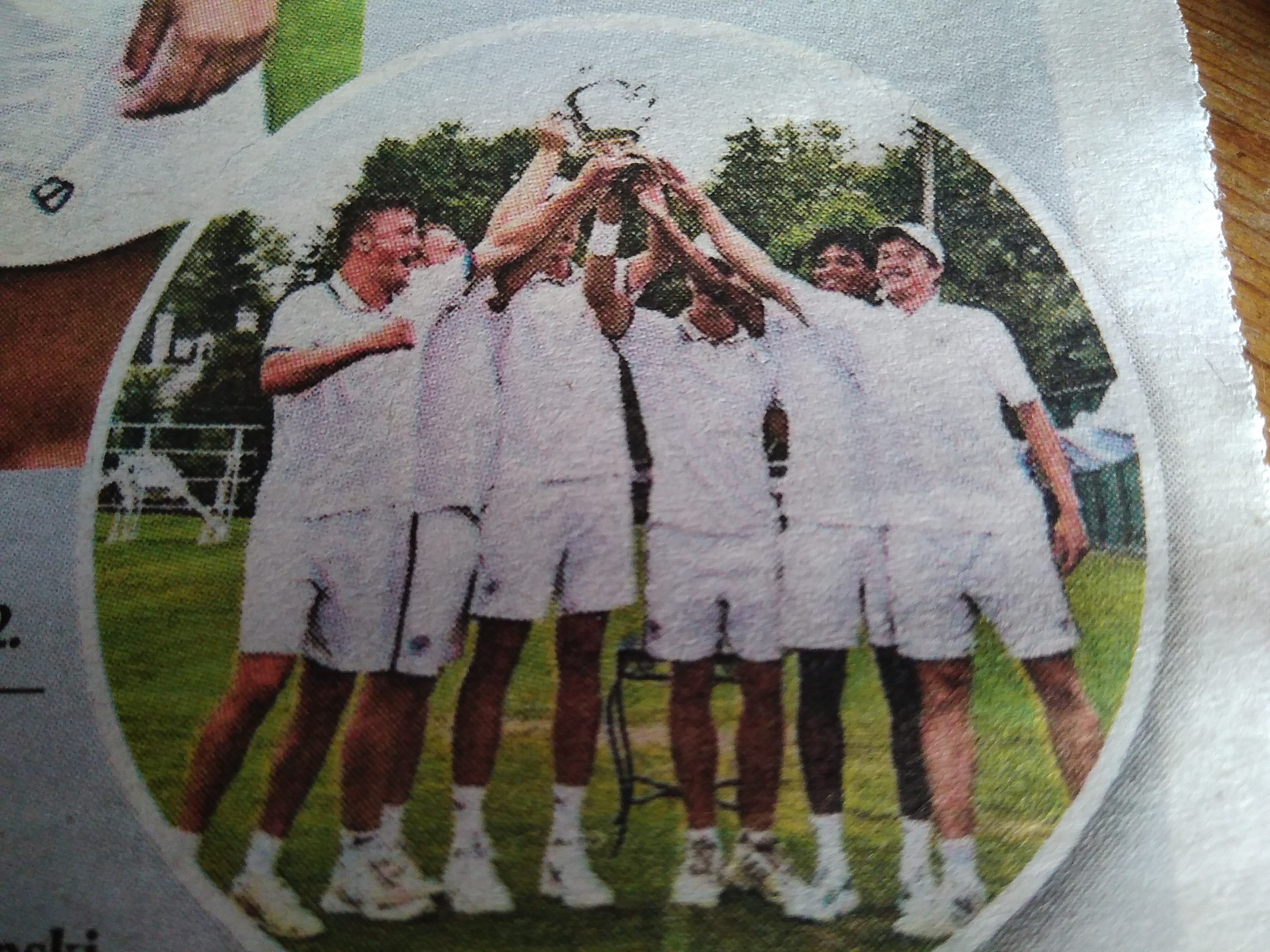Against the odds, British students have made history after beating their American rivals in the world’s oldest amateur international tennis competition
Reported David Brown of The Times, in October 2022.
It is the first time that students from Oxbridge Universities have seized the men’s and women’s titles from Harvard and Yale, which have dominated the competition over the years; of the 48 previous encounters, the Americans have won two thirds.
The grass court matches are held every other year, with the venue alternating between the All England Club at Wimbledon and the Seabright Lawn Tennis and Cricket Club in Rumson, New Jersey, involving three players from each of the four universities in teams of six.
The men’s team won the 101-year-old PRENTICE CUP, for the first time in 14 years, while the women won the SEABRIGHT CUP for only the third time, since its inception in 2004.
- Victory for The Oxbridge women in The Seabright Cup
- The men were also victors in The Prentice Cup
The Prentice Cup, an international intercollegiate tennis competition, can trace its roots back to 1899 and was born from the success of the combined universities track athletics meet, held that year and subsequently at intervals for a number of years up until WWI.
After the war, an agreement was reached between the four universities to hold an annual tennis match between the teams and the first match was played in 1921, at the Newport Casino, with the Harvard and Yale team coming out on top.

The Harvard and Yale team in 1921
However, a major change occurred in 1924, when Bernard S. Prentice, the then President of the ‘Seabright Lawn Tennis and Cricket Club, decided to donate a beautiful trophy, which was to be known as the Prentice Cup.
Therefore, in 1925, the Prentice Cup was first played for in Newport, Rhode Island, marking the beginning of a new era in this keen international rivalry and continued there until 1952, when the competition was moved to Seabright.
A milestone event occurred in the summer of 2004 when the first women’s teams made their debut at Seabright, with the Americans coming out on top. In August 2006, the Seabright Cup was officially put into competition for the first time at Wimbledon, with the British women victorious.
In 1944, the British Prime Minister, Winston Churchill first used the term, ‘special relationship’, to describe the ‘close allyship between Britain and America’. Two years later after victory in WWII, he emphasised that,
the good special relationship between the two countries would be realised by and beneficial to the world

Winston Churchill in 1940
There is no doubt that in the ensuing years, the two countries have enjoyed a closeness that is perhaps unrivalled with other nations in political terms, but it has not always been quite as convivial when it comes to sport and the Prentice Cup and Seabright Cup seem to be very much the exception rather than the rule.
According to Steven W Pope and John Nauright in their article American-British Sporting Rivalries and The Making of the Global Sports Industry (2017)
Everyone knows that Britain supposedly taught the world to play sport, however the American contribution to the development of modern global sport is not as well recognised
In looking more closely at the sporting rivalry during the 19th and early 20th centuries, it is interesting to note, that while Britain introduced the world to many of the ethical practices of sport, it was the US that taught the world how to sell it, often to the dismay of their British counterparts.
In 1851, Commodore John Cox Stevens of the New York Yacht Club formed a six -person syndicate to build a yacht with intention of taking her to England and making some money competing in regattas and match races and on 22nd August 1851 their yacht, ‘America’ raced against 15 yachts around the Isle of Wight; America won and the surviving members of the syndicate donated the trophy, which would later become the America’s Cup, through a deed of gift to the New York Yacht Club in 1857.; and so it began…
- The yacht, ‘America’.
- The America’s Cup Ewer
The America’s cup is the oldest international sporting trophy in the world and could also be considered to be the most unfair competition in all sport, because the winner (or defender) gets to choose the venue for the next edition and the rules of engagement every four years.
It is still considered to be the pinnacle of yacht racing and is a match held between only two teams and for 160 years Britain has been trying to win it back.
Since 1851, the USA has defended or won the trophy 30 times, New Zealand 3 and Australia 1 and despite 16 challenges (in the modern era countries go through a qualifying process), Britain has never yet won back the trophy that left the UK in the middle of the 19th century, which marked the beginning of a long rivalry between the two countries, that began to creep into other sports.
The event’s official website claims:
This was more than a simple boat race…
…symbolising a great victory for the new world over the old
The idea for a tennis tournament pitting the best British and Americans in competition against one another was almost certainly conceived by James Dwight, the first President of the US National Lawn Tennis Association when it was formed in 1881. He was desperately keen to assess the development of American players with their British counterparts and worked tirelessly to organise a properly sanctioned match between the two countries.
In the summer of 1899 members of the Harvard Tennis team competed in a tennis competition in Monterey, California; the team included a 20 year old Dwight Davis, Davis was US doubles champion in 1899 and would go on to serve as Secretary for War from 1925-1929; he then became Governor of The Philippines between 1929 and 1932. Reputedly, it is said that he had an idea that international competition might do for tennis what the America’s Cup had done for yachting and drafted a tournament format of what would later be called ‘The Davis Cup’. However, according to Lake & Eaves in ‘Debunking the Davis Cup Myth: Exposing the man and his cup in Tennis history’s biggest lie’, published in 2018 on Playing Pasts
Crucially, Dwight Davis was not in any way involved in the process and it is certain that he did not establish relations with Britain or invite them to compete for the trophy, nor did he conceive the idea for international team competition [Read the article HERE]
- James Dwight
- Dwight Davis( centre) with the trophy
First played in 1900, the cup was an attempt to stage an annual competition between the two leading tennis powers of the time, namely Britain and America and in commissioning and donating a $700 sterling silver bowl, out of his own money, Davis paved the way for the competition to take place and secured his name in the history of sport.
For the American hosts, the 1900 competition was a huge success and one of the key factors in their victory was the introduction of new tactics and strategies, which were resisted by the British who still focused on the concepts of amateurism and class superiority.
The creation of this competition was arguably, the greatest achievement of American tennis and the round robin structure was viewed by many as distinctly American, as it meant that all players had to play each other, unlike the knock-out format used at Wimbledon, where one could avoid playing particular players due to the luck of the draw.

The Davis Cup
Initially, only the US and Britain contested the trophy, but in 1904, Belgium, Austria and France entered followed a year later by a combined Australia and New Zealand team. By the outbreak of WW1, Germany and Canada also joined and by 2007, 137 countries were taking part. Britain has won the competition 10 times but had to wait almost 80 years before their most recent victory in 2015.The USA are the most successful Davis Cup nation having won the title a staggering 32 times, with Australia closest on 28 wins.
Not to be outdone by the men, the American tennis player, Hazel Hotchkiss Wightman donated a silver vase in 1920 as a prize for an international team competition and as a result, The USLTA decided to invite a team from Great Britain to challenge for the vase.

Hazel Hotchkiss Wightman
The inaugural Wightman Cup was played in August 1923 at the newly constructed stadium at Forest Hills in New York. The BBC provided coverage of the competition between 1936 and 1987, but in 1990 both countries announced that the competition would be suspended indefinitely due to American domination. Britain had won only 11 times in the history of the competition.

USA team- inaugural winners
Originally contested between Britain and America, Golf’s Ryder Cup, dates back to 1927, although matches between Britain and the US had taken place as early as 1921, when the first match took place in Worcester, Massachusetts. The home team were the victors and won the following four encounters before World War II allowing Britain to regroup and to add Ireland to their team; the inclusion of continental Europe in 1979 was partly prompted by the successes of a new generation of Spanish golfers led by Seve Ballesteros. Up to this point, the Great Britain and Ireland team had won just three of the 22 matches played and it was felt that in order for the competition to become more competitive, players from Europe needed to be added and since their inclusion, Europe have won eleven of the twenty-one matches played, with one tie.
- The Ryder Cup logo
- Samuel Ryder with the captains in 1927
The Ryder Cup is a biennial men’s golf team competition and is named after the English businessman and golf enthusiast, Samuel Ryder who donated the trophy. In early 1926 the idea of a match between the two countries was formally proposed and Ryder became involved and decided to sponsor the event which took place the following year. Along with the Solheim Cup, which is played by the female golfers of Europe and America, named after the Norwegian- American golf club manufacturer, Karsten Solheim was first played in 1990, the Ryder cup remains the exception within world professional sport because competitors do not receive any prize money for taking part. However, it is considered an honour to be selected and very prestigious due to the media interest in both Europe and The United States.

Karsten Solheim with the USA winning captain Joanne Garnerwith the trophy in 1994

Europe winners in 1985
Professor Dave Day of Manchester Metropolitian University argues:
Unfortunately for the British they rapidly found themselves outclassed by the Americans and increasingly by other countries like France and Australia. In the end events had to change in order to keep them meaningfully competitive and other nations had to become involved in them
‘These competitions’ argue Pope and Nauright, ‘ are examples of the way in which Americans indigenised sporting imports and created nationalistic sporting competitions and effectively imported them back to Britain and the rest of the world.’

Members of both teams before the The Prentice and Seabright cups in 2022
It is quite refreshing therefore, to recognise that the Prentice Cup and more recently the Seabright Cup, still remain purely an Anglo-American competition that has not felt the need to involve Universities from other countries, to make it more competitive and it has not changed dramatically since its inception in 1921!
The ‘ Special Relationship ‘ lives on.
Article © Bill Williams
Banner image By Oswald W. Brierly, published by Ackermann & Co. – National Maritime Museum, Greenwich, Public Domain, https://commons.wikimedia.org/w/index.php?curid=38430646













